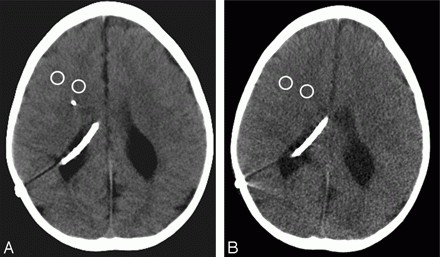November 2, 2015 - With the wide variability in utilization of computed tomography (CT) in children with ventricular shunts by hospital emergency departments (ED), there’s a need for strategies to identify children at risk of shunt malfunction.
The authors of a recent study1 quantified rates and variation in ED cranial CT utilization in children with ventricular shunts, estimate radiation exposure, and evaluate the association between CT utilization and shunt revision.
Retrospective longitudinal cohort study of ED visits from 2003-2013 in children 0-18 years old with initial shunt placement in 2003. Data were examined from 31 hospitals in the Pediatric Health Information System. Main outcomes were cranial CT performed during an ED visit, estimated cumulative effective radiation dose, and shunt revision within 7 days. Multivariable regression modeled the relationship between patient- and hospital-level covariates and CT utilization.
The 1319 children with initial shunt placed in 2003 experienced 6636 ED visits during the subsequent decade. A cranial CT was obtained in 49.4% of all ED visits; 19.9% of ED visits with CT were associated with a shunt revision. Approximately 6% of patients received ≥10 CTs, accounting for 37.2% of all ED visits with a CT. The mean number of CTs per patient varied nearly 20-fold across hospitals; the individual hospital accounted for the most variation in CT utilization. The median (IQR) cumulative effective radiation dose was 7.2 millisieverts (3.6-14.0) overall, and 33.4 millisieverts (27.2-43.8) among patients receiving ≥10 CTs.

Figure: CT study in a 7-year-old girl with a shunt for hydrocephalus.2
The author found a CT scan was obtained in half of ED visits for children with a ventricular shunt. With this inconsistency in evaluating children who enter the ED with ventricular shunts the authors recommend that strategies to identify children at risk of shunt malfunction are needed to reduce variability in CT utilization and radiation exposure in the ED.
References:
1. Florin TA, Aronson PL, Hall M, et al. Emergency Department Use of Computed Tomography for Children with Ventricular Shunts. J Pediatr. 2015 Oct 13. pii: S0022-3476(15)01028-8. doi: 10.1016/j.jpeds.2015.09.024. [Epub ahead of print]
2. Low-Dose Nonenhanced Head CT Protocol for Follow-Up Evaluation of Children with Ventriculoperitoneal Shunt: Reduction of Radiation and Effect on Image Quality. AJNR. http://www.ajnr.org/content/29/4/802/F2.expansion.html.




